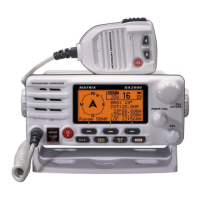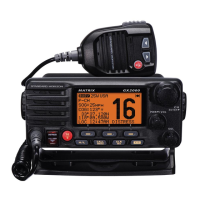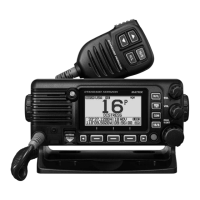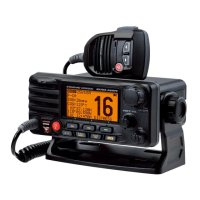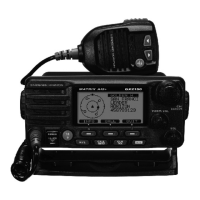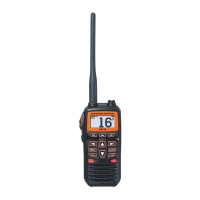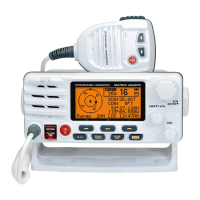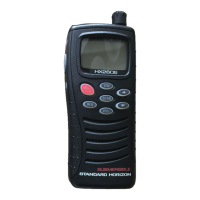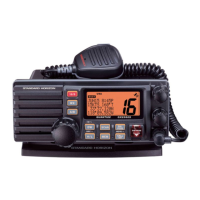Page 1GX2000/GX2100
MATRIX SERIES
GX2000 and GX2100
25 Watt VHF/FM
Marine Transceivers
Owner's Manual
z Integrated dual channel AIS (Automatic Identification System) receiver (GX2100)
z AIS (Automatic Identification System) receiver or transponder connection (GX2000)
z AIS target display: MMSI. Call Sign, Ship Name, BRG, DST, SOG, and COG
Ú
z Contact AIS Ship with DSC*
z 38400 AIS VDM sentence output to compatible GPS Chart Plotter (GX2100)
z 80 dB Commercial grade receiver
z Class D DSC (Digital Selective Calling) with Individual, All Ship, Position Report, Posi-
tion Request, and Distress.
z Automatically poll up to 4 ships
z Independent Channel 70 receiver built-in for continuous DSC watch
z Local/Distance attenuator
z Enter, Save, and Navigation to waypoint with Compass page
Ú
z Navigation to a DSC Distress Call
Ú
z Submersible JIS-7 / IPX7 (3.3 feet for 30 minutes)
z ClearVoice noise canceling speaker microphone with channel selection and 16/9 key
z Oversized rotary channel knob with push to enter, backlit display and keys
z 30 Watt PA/Loud Hailer with pre-programmed fog signals and (listen back GX2100)
z Capable of connecting an optional RAM3 second station remote microphone
z Intercom between radio and RAM3
z DSC position request and report function when connected to compatible GPS chart
plotter
z Voice Scrambler (optional)
z One button access to Channel 16 and 9
z User programmable soft keys
z Navigation (LAT/LON, SOG, and COG) information shown on display
Ú
z E2O (Easy-To-Operate) menu system
Ú When connected to an optional GPS (GX2100)
When connected to an optional GPS and AIS receiver or transponder (GX2000)
MATRIX AIS GX2100 MATRIX GX2000
